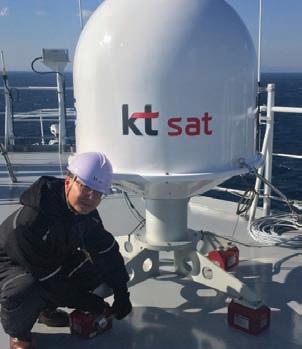Arcturus microGEO from Astranis
Delivering broadband to rural and indigenous populations in Alaska According to the Federal Communication Commission’s 14th Broadband Deployment Report issued on January 19, 2021, only 63.7 percent of Alaskans living in rural areas have access to wired broadband at speeds of at least 25 Mbps downstream and 3 Mbps upstream. Thanks to the efforts of Pacific Dataport, Inc., Kratos, and Astranis, Alaska’s middle and last mile broadband capacity is expected to triple. The plan is to expand 25/3 broadband service to the isolated and remote communities who need it most at a price they can afford. Crispin Littlehales, Executive Editor, Satellite Evolution Group
R
ugged, wild, and vast, Alaska has the nation’s lowest population density—just 1.3 persons per square mile. Alaska natives, organized into 228 tribes, account for 15.7 percent of the population and approximately twothirds of those people live in remote rural villages. A significant number of these communities are in areas accessible only by boat or aircraft. Not only is the terrain challenging and the population dispersed, but the harsh weather also makes the construction of any kind of infrastructure all but impossible during the winter months. Given these difficulties, it is no wonder that satellitebased services were viewed as the perfect solution. Indeed, Alaska-based reseller, Microcom, has been providing satellite broadband and TV to rural Alaskans for decades and has tens of thousands of customers. However, several years ago Microcom realized that satellite operators were running out of capacity with many 18
Alaskans still awaiting connectivity. In 2017, Microcom spawned a new satellite communications company called Pacific Dataport Inc. (PDI) to address Alaska’s digital divide.
AURORA TO THE RESCUE
From the start, PDI’s aim was to provide ubiquitous broadband coverage to Alaska at a competitive price through the creation of its own multi-service network called Aurora. Shawn Williams, Vice President of Government Affairs and Strategy for PDI notes, “Our ultimate goal is to sell cellular and broadband backhaul capacity to tribes, tribal consortiums, schools, health clinics, and Alaska telecoms. Our wholesale pricing will be a fraction of what everyone’s paying right now. In fact, it will bring Alaska very close to the wholesale pricing that you see in the lower 48 and that’s absolutely market disruptive.” Phase 1 of the Aurora Network includes the installation of a 9.4m Ka-band dual-purpose antenna from Kratos, coupled with a first-of-its-kind software-defined MicroGEO™ satellite from Astranis, scheduled to launch
www.satellite-evolution.com | August 2022
issue-final.pmd
18
09/08/2022, 10:39






